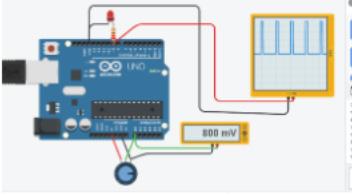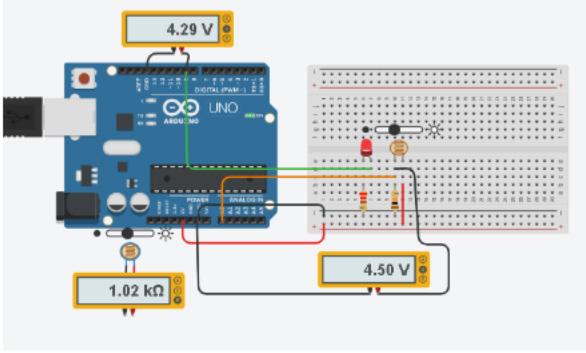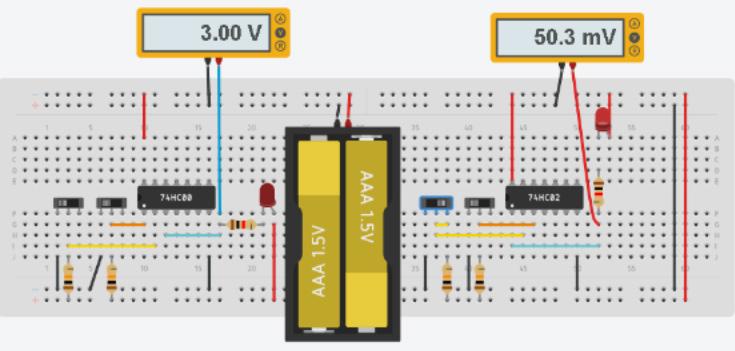
3 minute read
Making Classes from TingerCAD
Making classes from TinkerCAD
by Nick Carter
Advertisement
I had come across the electronics simulator from Autodesk when it was 123D Circuits and had played with it a bit. I used 123D Circuits for some STEM for Kids activities and it seemed to work quite well. In May 2017, Autodesk discontinued its 123D Circuits (Circuits.io) “Electronics Lab” feature and merged it into TinkerCAD. In merging it with TinkerCAD, they co-located electronics design with mechanical CAD, thus improving exposure and availability. They improved its scope in terms of components but discontinued a feature I liked: the ability to create circuit diagrams, although you can still export files for layout and part-lists. But it was still FREE to use!!
I thought TinkerCAD circuits would make a great teaching tool as it was so intuitive and easy to use, so I thought I would try it and made a class for Nova Labs on Intro to Electronic Circuits. This seemed to be fairly successful and I was able to combine the online activity with handling real things like multimeters and components. I found TinkerCAD actually has been approved by Fairfax County schools as a teaching tool, although I think probably the mechanical CAD is used more than the Circuits. TinkerCAD Circuits gives you a window where you can drag on and connect up real looking electronic components that act very realistically when you click “simulate”. It provides a description of each and the connections are clearly marked as to what they do. In the class, I start off by talking about and then building simple circuits, working up to more complex ones as skills grow through the lesson, including new components and experimenting and measuring the circuit with the included multimeters and oscilloscope to see what they do. The realism extends to having the resistors change their color codes (color rings A Basic Circuit in TinkerCAD representing value) as you change their value, coded just like real ones.

The Potentiometer voltage controls LED intensity using Pulse Width Modulation (PWM)
In exploring the simulator, I found that besides basic components like resistors, capacitors, LEDs, batteries, and transistors, the simulator included Arduino microcontroller and a variety of preprogrammed circuits called “starters.” It also implemented a SCRATCH-like block programming interface that was nicely spliced to a derived window with C++ like in the standard Arduino IDE. The text interface can download to your PC or you can paste your code from PC into it to debug, and yes there is ability to set a debug breakpoint to stop code and look at parameter values. So I decided to implement an Arduino Intro course, too. The simulation is also good enough to allow inclusion of multiple Arduinos in the circuit, which impressed me.

Here you can see how to control on LED from a photo flight sensor
So with inclusion of Arduinos they also added the range of things you can connect them to – motors, Neopixels, sensors. This inspired me to add a class on Arduino and Basic Sensors.
To complete the intro set I recently decided to add Digital Logic (using the included 7400 series logic family) and Analog Circuits (using included amplifier and comparator) to the rotation of classes and am currently planning one a week on a rotation basis depending on demand.
These last two are a bit trickier as each covers a broader range of skills, but I hope to have classes that will teach enough to make people interested to pursue more or have a better understanding of how electronics works.

Two digital logic chips to play with using switches as inputs
Each class I give is different and the students have different experiences and needs they bring, and with the relatively small classes, I can adapt the classes to what students need on an interactive basis.
I find it fun to research and construct the classes, so if there are other topics that I can usefully provide classes using this medium please let me know. If you like figuring out how circuits are connected and work, check out the interactive circuit below on the TinkerCAD website. If you make an account you can copy it and explore the circuit in detail.

Try figuring out how the eyes light up, and see if you can change which eye lights without changing the wiring. A hint - not all the wires actually do anything useful.
Here’s the project: https://www.tinkercad. com/things/4F68D1D6Bh3







